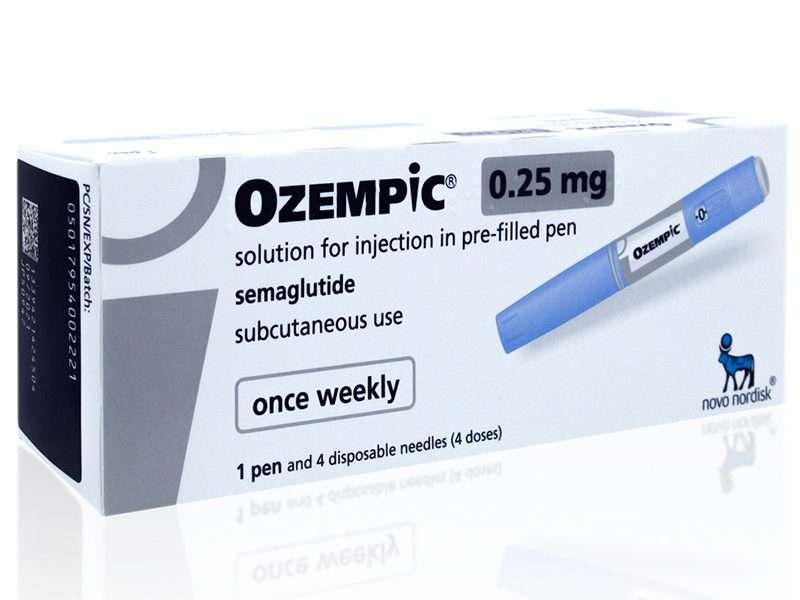How to get prescribed ozempic for weight loss
If you’re considering Ozempic as a weight loss aid in the United Kingdom, it’s essential to understand the process of obtaining this medication and the importance of a prescription. In this blog post, we will provide a guide on how to get prescribed Ozempic for weight loss in the UK, emphasizing the significance of medical supervision and caution against purchasing medication without a prescription.
- Consultation with a Healthcare Professional:
The first step in obtaining Ozempic for weight loss is to schedule a consultation with a healthcare professional, such as a general practitioner (GP) or an endocrinologist. They will assess your weight management goals, medical history, and any underlying health conditions to determine if Ozempic is suitable for you.
- Evaluation of Eligibility:
Healthcare professionals will evaluate your eligibility based on factors such as your body mass index (BMI), presence of obesity-related health conditions, and previous weight management efforts. These criteria help determine whether Ozempic is an appropriate option for your weight loss journey.
- Discussion of Risks and Benefits:
During your consultation, healthcare professionals will discuss the potential risks, benefits, and side effects associated with Ozempic. They will address any concerns you may have and provide personalized advice based on your specific health circumstances. This open dialogue ensures that you are well-informed and can make an educated decision about using Ozempic.
- Prescription Issuance:
If you are deemed eligible and decide to proceed with Ozempic, your healthcare professional will issue a prescription. They will specify the appropriate dosage, frequency, and duration of treatment based on your individual needs. It’s important to note that purchasing Ozempic without a prescription is illegal and potentially dangerous.
- Dispensing and Collection:
With your prescription in hand, take it to a pharmacy to have the medication dispensed to you. Follow the pharmacist’s instructions for collection and any additional information on storage and usage. Depending on your circumstances, you may need to pay a prescription fee, unless you are exempt under the National Health Service (NHS) exemption criteria.
- Ongoing Monitoring:
After starting Ozempic, regular follow-up appointments with your healthcare professional will be scheduled to monitor your progress, assess the medication’s effectiveness, and manage any potential side effects. This ongoing monitoring ensures your safety and allows for adjustments to your treatment plan as needed.
Caution against Buying Ozempic Without a Prescription:
Self-medicating without proper medical supervision can lead to unintended consequences, including adverse reactions, drug interactions, and inadequate monitoring of your progress.
Conclusion:
To get prescribed Ozempic for weight loss in the UK, it is necessary to consult a healthcare professional who can evaluate your eligibility, discuss the risks and benefits, and issue a prescription if appropriate. By following the proper channels and seeking medical supervision, you can ensure your safety and maximize the potential benefits of Ozempic as a tool in your weight loss journey. Remember, your healthcare professional is the best resource for personalized advice and guidance tailored to your specific needs.
Weight loss is a process that involves reducing body weight, typically by decreasing body fat and, in some cases, muscle mass. It is often pursued for health, aesthetic, or performance reasons. While weight loss can be a complex and individualized journey, incorporating certain principles can contribute to success. Here are some key factors to consider:
- Balanced Diet: Adopting a balanced and calorie-controlled diet is crucial for weight loss. Focus on consuming nutrient-dense foods such as fruits, vegetables, lean proteins, whole grains, and healthy fats. Avoid or limit processed foods, sugary snacks, and beverages high in calories.
- Portion Control: Pay attention to portion sizes to avoid overeating. Use smaller plates and bowls, and be mindful of your hunger and fullness cues during meals.
- Regular Exercise: Engaging in regular physical activity can help burn calories, build muscle, and improve overall health. Incorporate a combination of cardiovascular exercises (such as brisk walking, cycling, or swimming) and strength training (to build muscle and increase metabolism).
- Hydration: Drinking an adequate amount of water can support weight loss efforts. Water helps to suppress appetite, increase metabolism, and promote overall well-being. Aim for at least 8 glasses of water per day.
- Sleep and Stress Management: Sufficient sleep and stress management are often overlooked but play a significant role in weight loss. Poor sleep and chronic stress can disrupt hormonal balance, leading to increased appetite and cravings. Strive for 7-9 hours of quality sleep each night and incorporate stress-reducing activities like meditation, yoga, or hobbies.
- Behavior Modification: Adopting healthy habits and addressing emotional eating patterns can contribute to sustainable weight loss. Focus on mindful eating, recognizing hunger and fullness cues, and finding alternative ways to cope with stress or emotions.
- Support and Accountability: Seek support from friends, family, or a healthcare professional to stay motivated and accountable. Consider joining a weight loss group or working with a registered dietitian or nutritionist who can provide personalized guidance.
- Patience and Realistic Goals: Remember that sustainable weight loss takes time. Set realistic and achievable goals, aiming for a gradual and steady weight loss of 1-2 pounds per week. Avoid crash diets or extreme measures that can be detrimental to your health.

